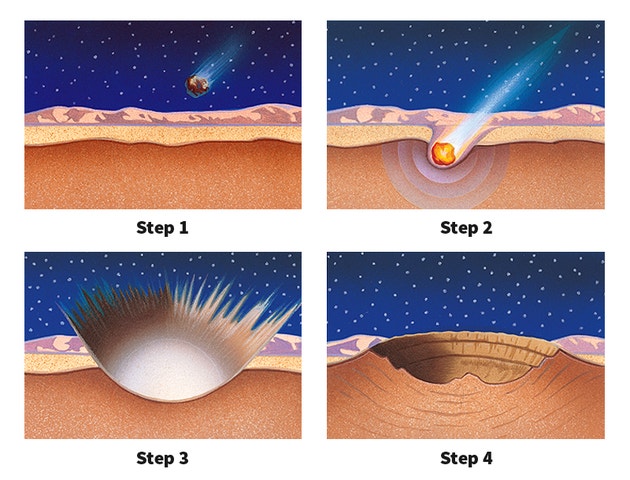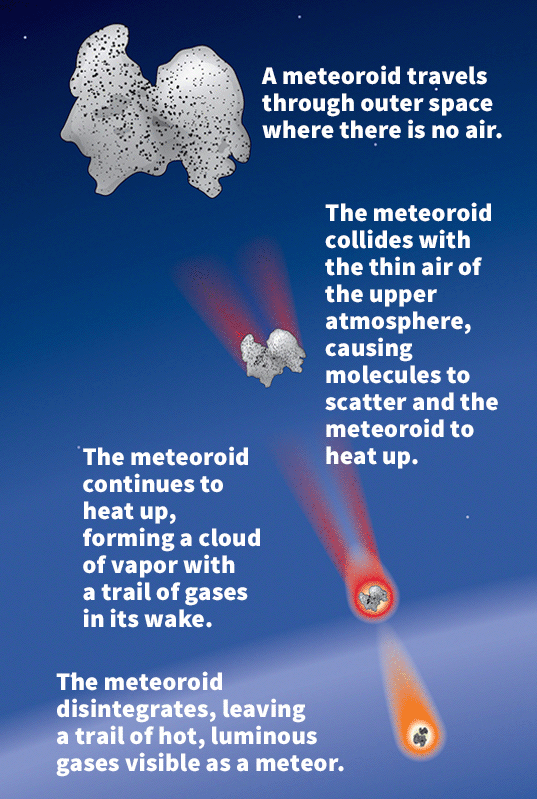Crater From Meteorite Strikes Found in Australia
Tuesday, March 24th, 2015March 24, 2015
After at least 300 million years, one of the largest impact events in Earth’s history is finally coming to light. Scientists from the Australian National University (ANU) in Canberra have discovered the remains of giant craters—evidence of huge strikes by a meteorite that split in two—measuring some 250 miles (402 kilometers) across. Their findings were reported this month in the journal Tectonophysics. The meteorites that struck in the Australian outback were at least 6 miles (9.6 kilometers) wide, the size of the asteroid that killed the dinosaurs.

World Book illustrations by Paul Turnbaugh
A crater is a bowl-shaped depression on the surface of a planet, moon, or other solid body. Most are impact craters, which form when an asteroid, comet, or other solid body strikes the surface of a larger body, such as a planet or moon, at high speed (above, Step 1). Such an impact releases a tremendous amount of energy in the form of shock waves (Step 2). Shock waves are waves of energy that travel away from the impact. The shock waves travel through the surface until their energy is used up. As they travel, they push material away from the impact site, forming the crater (Step 3). The shock waves force some of this material upward and outward to form the wall of the crater (Step 4). The impact also tosses some of the material into the air. This material, called ejecta, settles around the crater in a layer called the ejecta blanket.
While drilling in the Warburton Basin in central Australia, the ANU team found shocked quartz in a layer of rock dating from 300 to 600 million years ago. Shocked quartz is a type of rock that can only be formed by the extreme pressures of a meteorite impact. The scientists also found other evidence of the impact in Earth’s crust, such as variations in the magnetism of the rocks there.
If this impact was so large, where are the craters? On Earth, erosion (the breaking down and moving of rock and soil from one place to another) and plate tectonics (the slow movement of pieces of the earth’s crust) work to erase impact craters. On planets and moons where these forces aren’t at work, such as Earth’s moon, impact craters are more easily preserved. Hundreds of millions of years of erosion and plate tectonics have made the Australian craters invisible. Only features below the surface hint at the cataclysmic events of the past.





